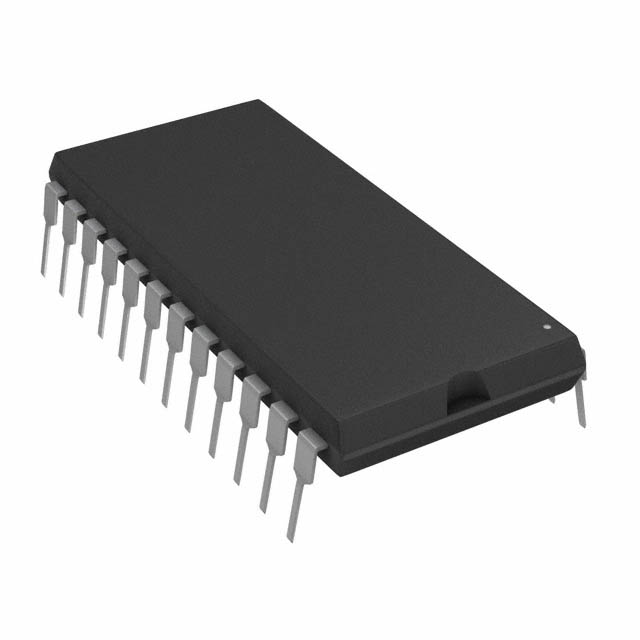Viz Specifikace pro podrobnosti o produktu.

DS1685-3+ English Editing Encyclopedia Entry
Product Overview
Category
DS1685-3+ belongs to the category of integrated circuits (ICs).
Use
This product is primarily used for timing and control applications in electronic devices.
Characteristics
- High precision timing capabilities
- Low power consumption
- Compact size
- Wide operating temperature range
Package
DS1685-3+ is available in a small surface mount package, making it suitable for space-constrained applications.
Essence
The essence of DS1685-3+ lies in its ability to provide accurate timing and control functions in various electronic devices.
Packaging/Quantity
This product is typically packaged in reels or tubes, with varying quantities depending on customer requirements.
Specifications
- Supply Voltage: 2.7V to 5.5V
- Operating Temperature Range: -40°C to +85°C
- Clock Frequency: Up to 32.768kHz
- Memory Size: 64 bytes of non-volatile RAM
- Interface: I2C
Detailed Pin Configuration
- VCC: Power supply input
- GND: Ground connection
- SDA: Serial data line for I2C communication
- SCL: Serial clock line for I2C communication
- INT: Interrupt output pin
- X1: Crystal oscillator input
- X2: Crystal oscillator output
- RST: Reset input pin
Functional Features
- Real-time clock (RTC) functionality
- Alarm and timer functions
- Non-volatile memory for data storage
- Watchdog timer for system monitoring
- Battery backup support for timekeeping during power loss
Advantages and Disadvantages
Advantages
- Accurate timing and control capabilities
- Low power consumption
- Compact size for space-constrained applications
- Wide operating temperature range for versatile usage
Disadvantages
- Limited memory size (64 bytes)
- Requires an external crystal oscillator for clock operation
Working Principles
DS1685-3+ operates as a real-time clock by utilizing an internal oscillator or an external crystal oscillator. It keeps track of time and provides timing signals to the connected electronic device. The non-volatile RAM allows for data storage, while the alarm and timer functions enhance its usability.
Detailed Application Field Plans
DS1685-3+ finds applications in various fields, including but not limited to: 1. Consumer electronics: Used in digital cameras, portable media players, and smartwatches for accurate timekeeping and scheduling functions. 2. Industrial automation: Integrated into control systems and programmable logic controllers (PLCs) to synchronize operations and schedule tasks. 3. Automotive: Employed in vehicle dashboard displays, infotainment systems, and navigation devices for precise timekeeping and event triggering. 4. Medical devices: Utilized in medical equipment such as patient monitors and infusion pumps to ensure accurate timing and synchronization.
Detailed and Complete Alternative Models
- DS3231: Offers higher memory capacity and additional features like temperature compensation.
- PCF8563: Provides similar functionality with a lower power consumption profile.
- MCP7940N: Features a larger memory size and supports battery backup for extended timekeeping during power loss.
In conclusion, DS1685-3+ is an integrated circuit that offers accurate timing and control capabilities for various electronic devices. Its compact size, low power consumption, and wide operating temperature range make it suitable for diverse applications. However, it has limited memory capacity and requires an external crystal oscillator for clock operation. Alternative models such as DS3231, PCF8563, and MCP7940N provide different features and can be considered based on specific requirements.
Seznam 10 běžných otázek a odpovědí souvisejících s aplikací DS1685-3+ v technických řešeních
Sure! Here are 10 common questions and answers related to the application of DS1685-3+ in technical solutions:
Q: What is DS1685-3+? A: DS1685-3+ is a specific model of a digital temperature sensor and real-time clock (RTC) integrated circuit.
Q: What are the key features of DS1685-3+? A: The key features of DS1685-3+ include accurate temperature sensing, real-time clock functionality, non-volatile memory, and I2C interface compatibility.
Q: How can DS1685-3+ be used in technical solutions? A: DS1685-3+ can be used in various applications such as industrial automation, data loggers, medical devices, consumer electronics, and embedded systems that require temperature monitoring and timekeeping capabilities.
Q: How accurate is the temperature sensing capability of DS1685-3+? A: DS1685-3+ offers high accuracy temperature sensing with a typical accuracy of ±0.5°C.
Q: Can DS1685-3+ operate without an external power supply? A: No, DS1685-3+ requires an external power supply for operation.
Q: Does DS1685-3+ have any built-in memory for storing data? A: Yes, DS1685-3+ has non-volatile memory (NVRAM) that can be used to store critical information like configuration settings or user data.
Q: What is the communication interface supported by DS1685-3+? A: DS1685-3+ supports the I2C (Inter-Integrated Circuit) communication interface, making it compatible with a wide range of microcontrollers and other devices.
Q: Can DS1685-3+ generate alarms based on temperature thresholds? A: Yes, DS1685-3+ has programmable temperature alarm functionality that can trigger an interrupt or set a flag when the temperature exceeds a specified threshold.
Q: Is DS1685-3+ capable of providing accurate timekeeping even during power outages? A: Yes, DS1685-3+ has an integrated backup power supply (typically a coin cell battery) that allows it to maintain accurate timekeeping even when the main power is disconnected.
Q: Are there any development resources available for DS1685-3+? A: Yes, the manufacturer provides datasheets, application notes, and software libraries that can assist in the integration and programming of DS1685-3+ into technical solutions.
Please note that the answers provided here are general and may vary depending on the specific implementation and requirements of your technical solution.

